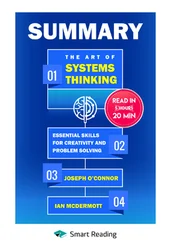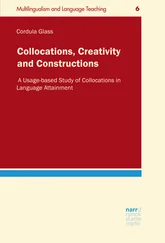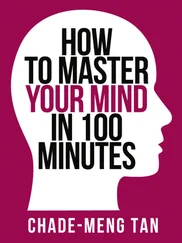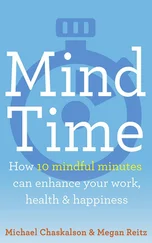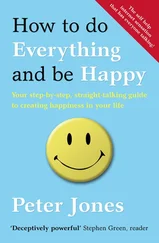To this end, Meng has laid out a well-designed and well-tested pathway for the development and application of emotional intelligence in the workplace and at home. It is founded on cutting-edge science and the well-established track record of research in emotions and emotional intelligence, the importance of optimism, and the power of compassion and kindness as well as the growing neuroscientific study of mindfulness and compassion. This research is showing that significant benefits of meditation can be observed after only eight weeks of training. Richie Davidson and I did a study with a number of our colleagues showing that people in a work setting who practiced mindfulness in the form of MBSR for eight weeks showed a shift in their emotional set point in the prefrontal cortex in a direction of greater emotional intelligence, and in the same direction as monks who had practiced for over ten thousand hours—evidence that you don’t have to become a monastic, or quit your job, or abandon your family to benefit from meditation. In fact, work and family are perfect environments for working with your own mind and body, cognitions, and emotions in the ways Meng describes here. Before that study was done, it was generally thought that one’s emotional set point was fixed before adulthood and could not be changed. Our results showed that the brain responds to this kind of meditative training by reorganizing its activity in the direction of greater emotional balance. Other studies have shown that the brain reorganizes its very structure as well, an example of the phenomenon known as neuroplasticity.
It turns out that Meng is indeed a unique and skillful, if way out-of-the-box, meditation teacher, as depicted in the tongue-in-cheek cartoons. He is the first to say that he learned it all from others. He certainly has great teachers and collaborators in the form of Dan Goleman, Mirabai Bush, Norman Fischer, and others. But Meng himself puts it all together here in a very effective way and documents his sources assiduously. If Search Inside Yourself is a bit light on the time recommended for the actual formal meditation practices, that is by design. Once one has tasted the practice for oneself, the motivation is very likely to be there to extend the time of formal practice, not to achieve a special state, but to simply rest in awareness itself, outside of time altogether. This is the practice of non-doing, of openhearted presencing, of pure awareness, coextensive with and inseparable from compassion. It is not an escape from life. On the contrary, the practice of mindfulness is a gateway into the experience of interconnectedness and interdependence out of which stem emotionally intelligent actions, new ways of being, and ultimately greater happiness, clarity, wisdom, and kindness—at work and in the world. One small shift in the way we each conduct ourselves, and the crystal lattice structure of the world is already different. In this way, we are the world, and when we take responsibility for our small but not insignificant part of it, the whole is already different—the flowering we manifest emotionally and in every other way of some importance, potentially enormous.
I wish you well in entering Meng’s world and Meng’s mind, and more importantly, in discovering your own mind and heart and body and relationships, perhaps in new and undreamed-of ways. May your adventure here be deeply nurturing. And may it bring peace—inwardly and in every other way.
—Jon Kabat-Zinn
Introduction Contents Cover Title Page Dedication Foreword by Daniel Goleman Foreword by Jon Kabat-Zinn Introduction: Searching Inside Yourself Chapter One: Even an Engineer Can Thrive on Emotional Intelligence Chapter Two: Breathing as if Your Life Depends on It Chapter Three: Mindfulness Without Butt on Cushion Chapter Four: All-Natural, Organic Self-Confidence Chapter Five: Riding Your Emotions like a Horse Chapter Six: Making Profits, Rowing Across Oceans, and Changing the World Chapter Seven: Empathy and the Monkey Business of Brain Tangos Chapter Eight: Being Effective and Loved at the Same Time Chapter Nine: Three Easy Steps to World Peace Epilogue: Save the World in Your Free Time Acknowledgments Notes Recommended Reading and Resources Index Praise for Search Inside Yourself Copyright About the Publisher
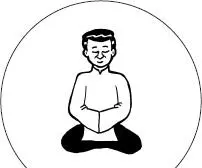
Searching Inside Yourself Contents Cover Title Page Dedication Foreword by Daniel Goleman Foreword by Jon Kabat-Zinn Introduction: Searching Inside Yourself Chapter One: Even an Engineer Can Thrive on Emotional Intelligence Chapter Two: Breathing as if Your Life Depends on It Chapter Three: Mindfulness Without Butt on Cushion Chapter Four: All-Natural, Organic Self-Confidence Chapter Five: Riding Your Emotions like a Horse Chapter Six: Making Profits, Rowing Across Oceans, and Changing the World Chapter Seven: Empathy and the Monkey Business of Brain Tangos Chapter Eight: Being Effective and Loved at the Same Time Chapter Nine: Three Easy Steps to World Peace Epilogue: Save the World in Your Free Time Acknowledgments Notes Recommended Reading and Resources Index Praise for Search Inside Yourself Copyright About the Publisher
Look within; within is the fountain of all good.
—Marcus Aurelius
What does the happiest man in the world look like? He certainly does not look like me. In fact, he looks like a bald French guy in Tibetan robes. His name is Matthieu Ricard.
Matthieu was born and grew up in France. In 1972, after completing his Ph.D. in molecular genetics at the Institut Pasteur, he decided to become a Tibetan Buddhist monk. I tell him that the reason he became a monk is because he could not join Google back in 1972—and the monk thing seemed like the next best career choice.
Matthieu’s career choice leads us to the story of how Matthieu became the “happiest man in the world.” When the Dalai Lama became interested in the science of meditation, he invited Tibetan Buddhist monks to participate in scientific studies. Matthieu was an obvious choice as a subject, as he was a bona fide scientist, understood both Western and Tibetan ways of thinking, and had decades of classical meditation training. Matthieu’s brain became the subject of numerous scientific studies. 1
One of many measurements conducted on Matthieu was his level of happiness. There turns out to be a way to gauge happiness in the brain: by measuring the relative activation of a certain part of your left prefrontal cortex versus your right prefrontal cortex. 2The stronger the relative left-tilt is measured in a person, the more that person reports positive emotions, such as joy, enthusiasm, high energy, and so on. The reverse is also true; those with higher activity on the right report negative emotions. When Matthieu’s brain was scanned, his happiness measure was completely off the charts. He was, by far, the happiest person ever measured by science. Pretty soon, the popular media started nicknaming him the “happiest man in the world.” Matthieu himself is a little annoyed by that nickname, which creates an element of humorous irony.
Extreme happiness is not the only cool feat Matthieu’s brain can pull off. He became the first person known to science able to inhibit the body’s natural startle reflex—quick facial muscle spasms in response to loud, sudden noises. Like all reflexes, this one is supposed to be outside the realm of voluntary control, but Matthieu can control it in meditation. Matthieu also turns out to be an expert at detecting fleeting facial expression of emotions known as microexpressions. It is possible to train people to detect and read microexpressions, but Matthieu and one other meditator, both untrained, were measured in the lab and performed two standard deviations better than the norm, outperforming all the trained professionals.
Читать дальше
![Chade-Meng Tan Search Inside Yourself: Increase Productivity, Creativity and Happiness [ePub edition] обложка книги](/books/703803/chade-cover.webp)


